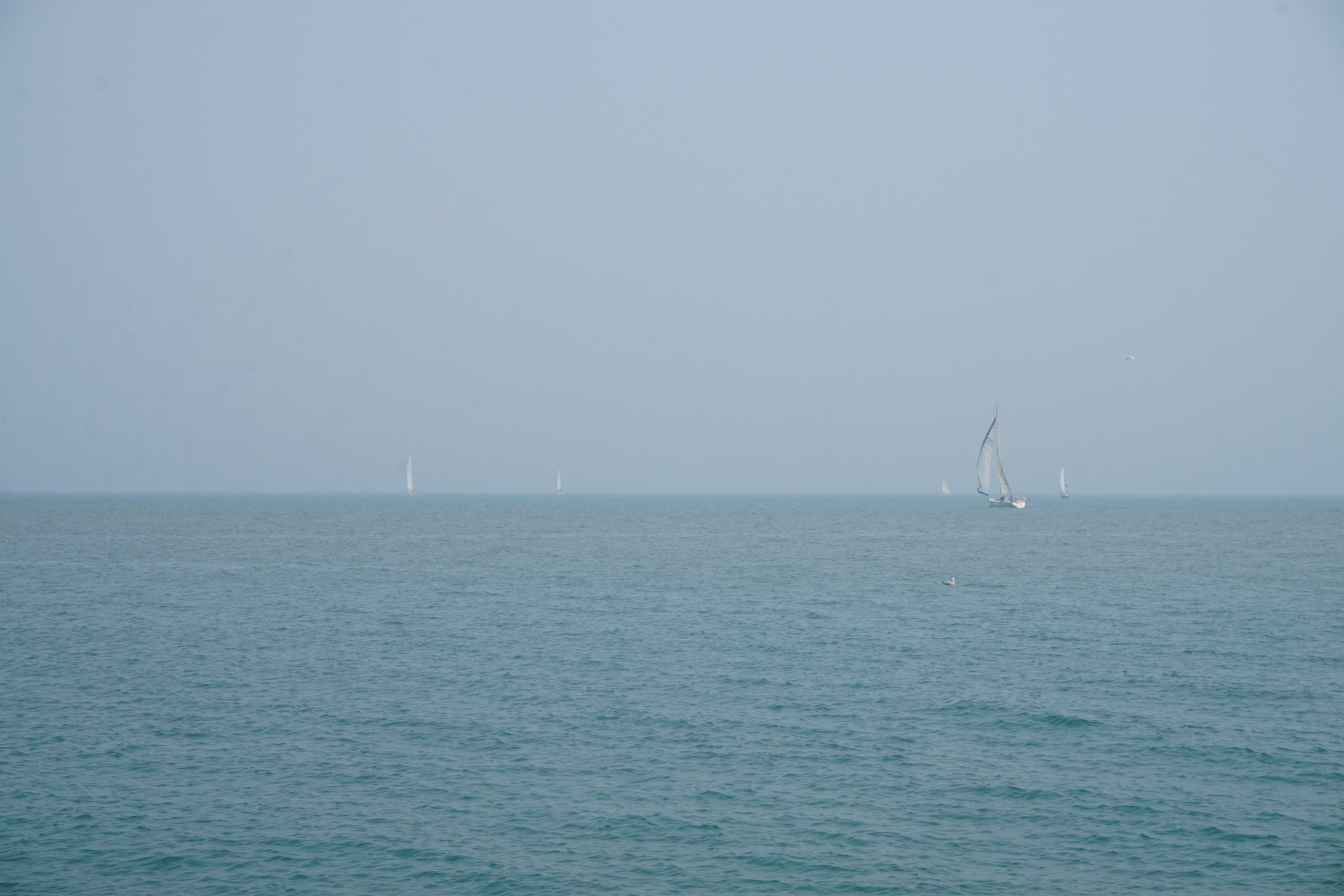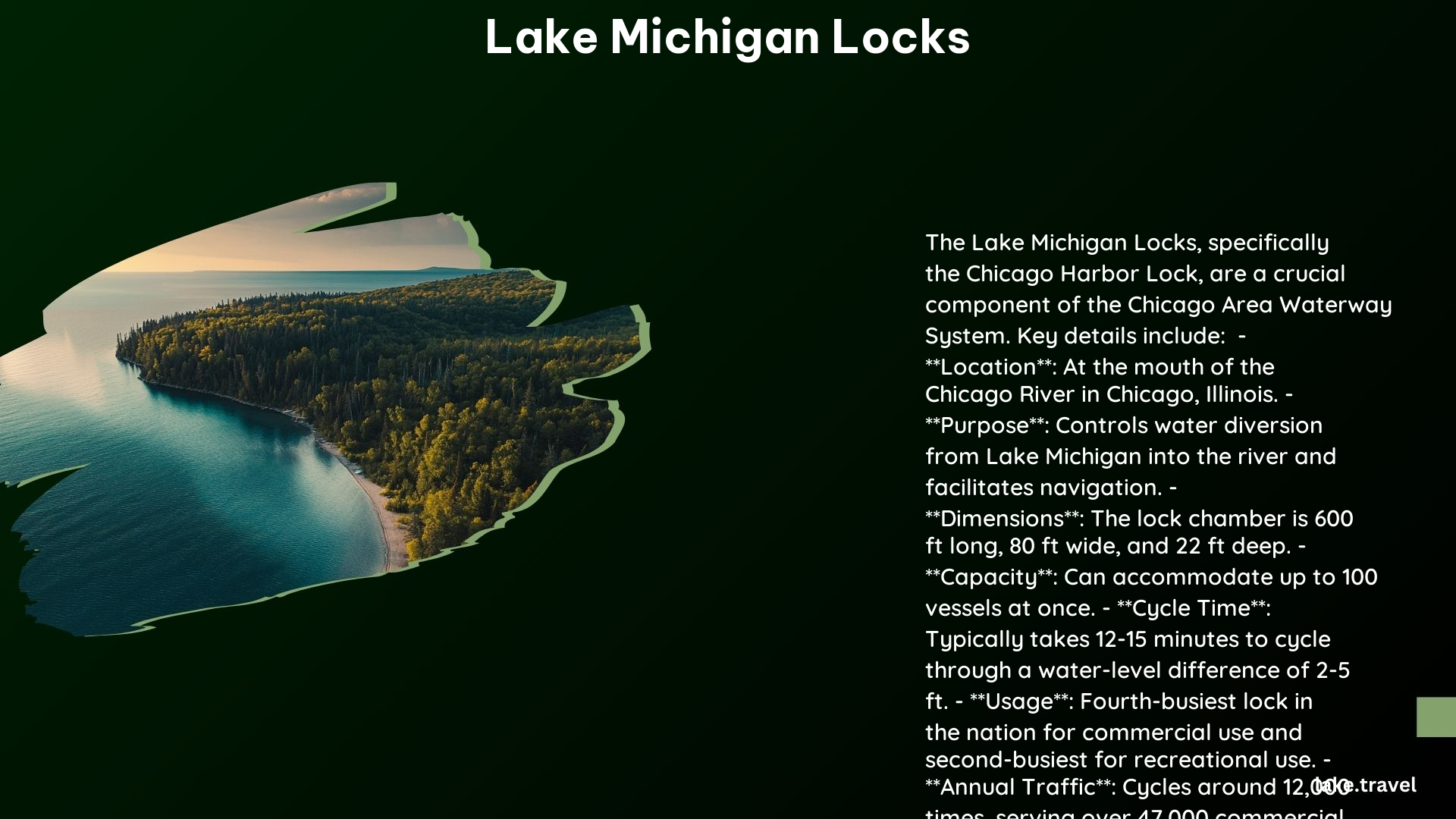Lake Michigan Locks are a crucial component of the Great Lakes waterway system, facilitating navigation and commerce between the lakes. These locks play a vital role in controlling water levels and allowing vessels to pass between Lake Michigan and the Chicago River. As a lakes touring enthusiast, understanding the purpose, history, and operations of the Lake Michigan Locks can enhance your appreciation for the region’s waterways.
Purpose of Lake Michigan Locks

The primary purpose of the locks on Lake Michigan is to control water levels and allow vessels to pass between the lake and the Chicago River. This is achieved through the Chicago Harbor Lock, which is a stop lock and dam located at the mouth of the Chicago River. The lock ensures that water levels are maintained, and navigation is possible for both commercial and recreational vessels.
Water Level Management

The Chicago Harbor Lock manages water levels by controlling the flow of water between Lake Michigan and the Chicago River. The lock chamber is 600 feet long, 80 feet wide, and 22 feet deep, and it can accommodate up to 100 vessels at once. Water levels are controlled via gravity by partially opening and closing the lock gates, which typically takes 12-15 minutes to cycle through a two to five-foot difference in water levels.
History of Lake Michigan Locks
The Chicago Harbor Lock was built between 1936 and 1938 as part of a larger project to reverse the flow of the Chicago River and improve water quality in Lake Michigan. The lock was originally designed and built by the Metropolitan Water Reclamation District of Greater Chicago and was later transferred to the U.S. Army Corps of Engineers for maintenance and operation.
Operations and Statistics
The Lake Michigan Locks are a vital part of the region’s transportation infrastructure, with the following key statistics:
| Statistic | Value |
|---|---|
| Usage | The Chicago Harbor Lock is the fourth-busiest lock in the nation for commercial use and the second-busiest for recreational use. |
| Vessel Capacity | Up to 100 vessels can be locked at once. |
| Annual Cycles | The lock cycles approximately 12,000 times annually. |
| Passenger Traffic | It serves over 711,902 commercial passenger one-way trips and 41,071 non-cargo vessel one-way trips. |
| Cargo | The lock handles around 200,000 tons of commercial cargo annually. |
Maintenance and Upgrades
The Lake Michigan Locks have undergone various maintenance projects over the years, including the replacement of structural steel sector gate leafs and associated hydraulic operating machinery in 2011. Additionally, funds from the Bipartisan Infrastructure Law are being used for lock chamber floor repairs and other maintenance activities to ensure the continued smooth operation of the locks.
Visitor Information
For lakes touring enthusiasts, the Lake Michigan Locks offer a unique opportunity to witness the operation of these vital waterway structures. The Soo Locks Visitors Center is open daily from 10 a.m. to 7 p.m. until the end of October, and the Soo Locks Park and Observation Deck are open daily from 9 a.m. to 10 p.m. in June, July, and August, and from 9 a.m. to 6 p.m. during other months. Visitors can call (906) 202-1333 for information on ship passages.
Conclusion
The Lake Michigan Locks are a critical component of the Great Lakes waterway system, playing a vital role in controlling water levels and facilitating navigation for both commercial and recreational vessels. As a lakes touring enthusiast, understanding the history, operations, and visitor information of these locks can enhance your appreciation for the region’s waterways and the infrastructure that supports them.
